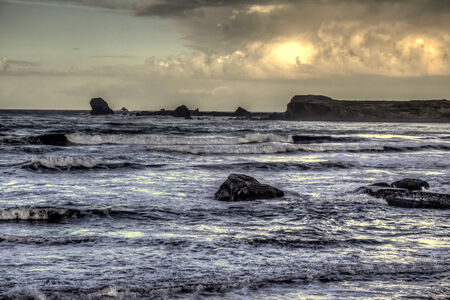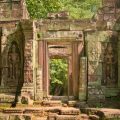Celtic Traditions and Sacred Landscapes
Long before Roman roads criss-crossed the British Isles, the ancient Celts wove an intricate relationship with the land—one rooted in reverence, myth, and a deep sensitivity to the subtle energies that pulse through earth and stone. The rolling hills, mist-clad valleys, and enigmatic stone circles of Britain were not just backdrops for daily life; they were alive with presence, spirit, and meaning. To walk through a grove or ascend a windswept tor was to enter into silent communion with ancestors and otherworldly forces. For the Celts, every river had its guardian, each hill a story, and all stones bore witness to something greater than themselves. This animistic worldview laid the foundation for later geomantic practices across Britain—where divining earth energies and recognising sacred sites became more than superstition; it was an art form that shaped communities and inspired awe. The echoes of these traditions linger still, inviting us to sense the unseen threads woven between place, people, and the mysterious heart of the land itself.
2. Megalithic Sites and Ley Lines
The rugged landscapes of Britain are etched with enigmatic monuments—stone circles, solitary standing stones, and ancient avenues—each imbued with an energy that has beguiled generations. Within the Celtic worldview, these sites were not merely markers of ritual or time; they were seen as vital nodes in a living landscape, pulsing with earth energies and spiritual resonance. The intricate relationship between megalithic architecture and the natural world is nowhere more apparent than in the way stone circles such as Stonehenge, Avebury, and Callanish seem to converse with the land itself, their placements whispering secrets of alignment and purpose.
It is through this Celtic lens that British geomancy finds its roots—a tradition woven from the intuitive mapping of earth energies known as ley lines. These invisible threads are believed to connect sacred sites across the British Isles, forming a matrix of power that both shapes and is shaped by human consciousness. The act of walking these lines, tracing their course through rolling hills and mist-laden valleys, becomes a pilgrimage in itself: a journey into the mythic heart of Albion where past and present interlace.
Celtic Heritage: Sacred Geometry and Site Placement
Early Celtic practitioners viewed the land as a living entity, animated by spirits and elemental forces. Their geomantic wisdom guided the placement of megaliths at points where these energies converged most potently. The process was less about imposing order upon nature than entering into dialogue with it—a sensitive attunement that still echoes in local folklore and seasonal gatherings today.
| Megalithic Site | Region | Linked Ley Lines | Celtic Significance |
|---|---|---|---|
| Stonehenge | Wiltshire | Michael & Mary Line | Solar alignments; ancestral veneration |
| Avebury | Wiltshire | Kennet-Lee Line | Lunar cycles; community rituals |
| Callanish Stones | Isle of Lewis | Hebridean Axis | Star lore; initiation rites |
The British Fascination with Ley Lines
The idea of ley lines captured the British imagination during the early twentieth century, but its roots stretch far deeper into prehistory. It is said that Celtic druids could sense these currents beneath their feet—the “dragon paths” or “fairy roads”—and chose their sacred spaces accordingly. Today, modern dowsers walk these same routes, rods in hand, seeking to reconnect with an ancient practice that blends science, spirituality, and story.
Mapping the Invisible: Legacy in Modern Geomancy
Through centuries of change, the influence of Celtic traditions endures in British approaches to geomancy. Whether one stands amidst moss-laden stones at dawn or consults maps drawn in light and legend, there is an ever-present sense that these places are more than relics—they are living thresholds to Britain’s mystical heritage. In walking their perimeters or simply pausing to listen to the wind between stones, we step into a narrative as old as the land itself.

3. Druids, Seers, and Earth Mysteries
In the shadowy dawns of ancient Britain, a figure cloaked in emerald wisdom walked the land—the Druid. Revered as both sage and intermediary, the Druid embodied the living bridge between the Celtic people and the breathing spirit of their homeland. These keepers of geomantic lore understood that every standing stone, winding river, and whispering copse was more than mere scenery; it was a living conduit of earth energies, pulsing with mystery and memory.
The Sacred Role of the Druid
Druids were not simply priests or philosophers; they were geomancers whose rituals shaped the very fabric of British spirituality. Through intricate ceremonies at sacred groves or atop mist-veiled hills, they attuned themselves to ley lines—those invisible veins of energy said to connect ancient sites across the landscape. With staff in hand and heart attuned to subtle frequencies, Druids interpreted omens in rustling leaves and shifting winds, believing the land itself spoke through these signs.
Seers and Wise Folk: Guardians of Ancient Wisdom
Alongside the Druids moved seers and wise women—folk whose vision pierced veils unseen by ordinary eyes. They mapped hidden currents beneath fields and forests, reading earth energies as one might read a lover’s face. Their practices—divining with rods, scrying in sacred springs—were woven into daily life, guiding communities in planting, building, and ritual celebration. In this manner, the spiritual heritage of Celtic Britain became inseparable from its physical terrain.
Living Traditions: The Land as Teacher
Celtic geomancy was never static; it lived and breathed alongside those who honoured it. Each ritual circle or midsummer vigil reaffirmed an ancient pact: that humans are stewards rather than conquerors of the land. Even today, echoes of these practices linger in British folk customs and place names, reminding us that beneath our feet flows an enduring legacy—a network of earth mysteries shaped by Celtic reverence for place and spirit alike.
4. Folk Practices and Rituals Rooted in the Land
Across the rolling hills and ancient woodlands of Britain, echoes of Celtic tradition continue to shape how communities relate to their land. Village customs, seasonal festivals, and site-specific rituals—though adapted over centuries—still carry the whisper of earth energies that the Celts so deeply revered. Imagine midsummer dawn on the Wiltshire downs: villagers gathering at an ancient barrow, weaving wildflowers into garlands, their laughter mingling with the birdsong as they process towards a standing stone circle. These moments are more than quaint traditions; they are acts of geomantic connection, rooted in the belief that certain places hum with power.
Many British folk practices revolve around sacred landscapes: wells believed to heal, trees adorned with ribbons for wishes, or stones circled three times for luck. Such customs are not arbitrary. They reflect an intuitive understanding—a kind of spiritual cartography—of energetic hotspots mapped long ago by Celtic seers. In Cornwall, the “clootie wells” persist, where cloth strips tied to branches invite healing from both water spirit and earth energy alike. In the Scottish Highlands, the Beltane fires still blaze each May, echoing ancient rites to rekindle vitality in both land and people.
Custom or Ritual |
Location |
Celtic Influence |
|---|---|---|
| Maypole Dancing | England (rural villages) | Celebration of fertility and earth’s renewal at Beltane |
| Clootie Well Offerings | Cornwall & Scotland | Veneration of sacred springs and healing energies |
| Stone Circle Gatherings | Avebury, Stonehenge | Honouring solstices; alignment with ley lines |
| Apple Wassailing | West Country orchards | Blessing the land for abundance; spirits of place honoured |
| Morris Dancing at Ancient Sites | South England villages | Energising the earth through rhythmic movement; ancient ritual echoes |
A Living Legacy in Everyday Life
The persistence of these practices reveals how Celtic sensibilities towards earth energies remain alive beneath modern routines. Even in bustling market towns or suburban gardens, echoes of geomancy surface—in hedge-laying traditions following old boundary lines or local legends about fairy mounds that must not be disturbed. These stories and rituals are not mere superstition but living links between people and place, keeping alive a subtle dialogue with the land’s spirit. Through them, everyday British life continues to resonate with ancient wisdom: a reminder that beneath our feet flows a tapestry of power mapped long before written history.
5. Modern Geomancy: Reviving the Ancient Connection
Across the rolling hills of Britain, a quiet renaissance is stirring. Today’s geomancers, spiritual seekers, and visionary artists are reaching back through the mists of time, rekindling their relationship with the land by weaving Celtic wisdom into modern practice. These contemporary wayfarers feel the ancient pulse beneath their feet, sensing subtle energies that echo with stories of druids and sacred groves. Their journeys often begin at sunrise amid dew-laden meadows or within the embrace of stone circles like Avebury or Callanish—places where the veil between worlds seems thinner, humming with ancestral memory.
Rediscovering the Language of the Land
Many modern practitioners approach geomancy as a living dialogue with the earth. Inspired by Celtic reverence for nature’s cycles and places of power, they employ practices such as dowsing, intuitive mapping, and meditative walks to attune themselves to leys and hidden currents. The British landscape becomes a tapestry of meaning, where ancient trackways are not merely relics but energetic arteries still vibrant with life. Artists too find themselves drawn to these energies, creating sculptures or land art that both honour and amplify these subtle forces—a nod to Celtic motifs spiralling from past into present.
Community Gatherings and Spiritual Pilgrimage
Communal events such as solstice celebrations or earth-healing ceremonies have blossomed across Britain’s countryside. Here, people come together in a spirit of shared curiosity and respect for the old ways. Dressed in woollen cloaks or adorned with wildflowers, they chant, drum, and meditate at sacred sites, seeking to harmonise their own energies with those of the land. These gatherings echo ancient Celtic festivals—Beltane fires flickering once more on hilltops—fostering a sense of belonging that transcends time.
Contemporary Insights Rooted in Tradition
This revival is not simply nostalgic; it is transformative. By embracing Celtic perspectives on interconnectedness, today’s geomancers cultivate a deeper ecological awareness and stewardship. They recognise that every standing stone, winding river, or venerable yew carries its own spirit—a partner in ongoing creation rather than a backdrop for human activity. In this way, modern British geomancy becomes an act of reverence and renewal: a conscious re-enchantment of place grounded in both ancient tradition and present-day wonder.
6. The Enduring Spirit of Place
To walk the British landscape is to trace the footsteps of ancestors who saw the land not as a backdrop, but as a living story—woven with spirit, memory, and meaning. Even today, the ancient Celtic sensitivities to earth energies and sacred sites echo quietly beneath our feet, shaping how many in Britain perceive and relate to their surroundings. This enduring awareness invites us into an immersive contemplation: fields, hills, stone circles, and winding rivers are not simply features of geography; they are participants in an ongoing conversation between people and place.
In the gentle hush before dawn on the moors, or amidst the bluebell woods of spring, one can sense how geomantic traditions rooted in Celtic lore continue to inform a deep-seated wonder for the land. The placement of stones, the reverence for groves and wells—all whisper a message of belonging that transcends time. These customs have quietly guided generations in tending the earth with respect, reminding us that care for the landscape is both practical stewardship and spiritual kinship.
Across Britain, this intimate relationship with place endures in subtle rituals: offerings left at ancient trees, community celebrations marking solstices, or moments of silent gratitude while overlooking misty vales. Such acts keep alive a narrative where every hollow and hillock holds significance. They encourage us to listen—to feel for those undercurrents of energy and memory that shimmer just beyond ordinary perception.
Thus, the influence of Celtic traditions on British geomancy is more than historical curiosity; it is a living inheritance. It calls forth a renewed responsibility to cherish and protect our landscapes—not only for their beauty or utility but as vital threads in a tapestry of connection that sustains community and soul alike.
As we attune ourselves to these old ways of seeing and sensing, we become part of the land’s unfolding story—rooted in wonder, shaped by care, and held within the enduring spirit of place.


